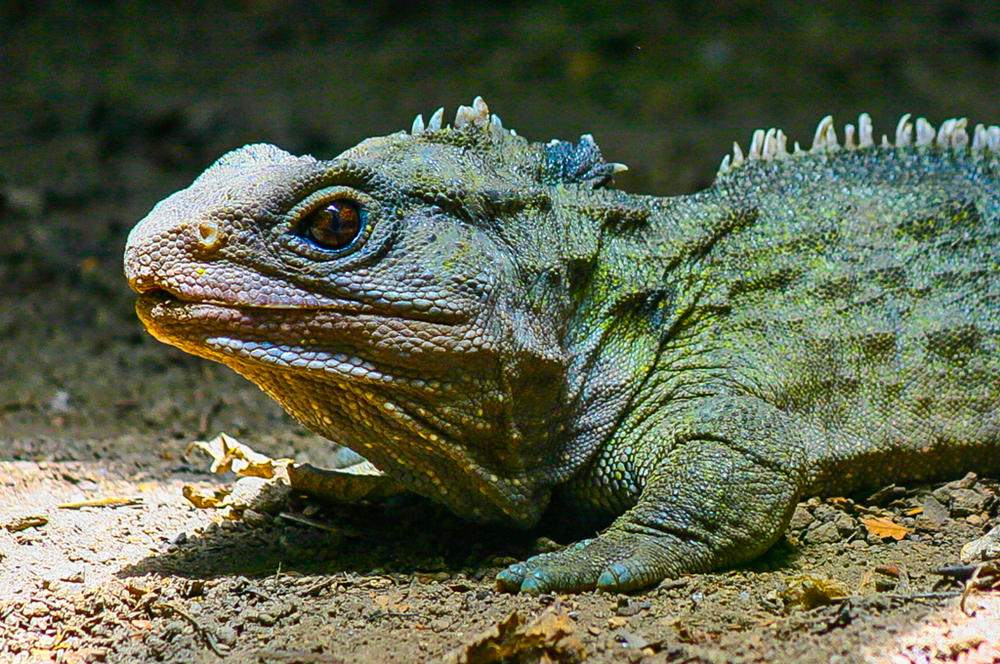Tuataras may look like lizards, but they are more oddballs of the reptile world.
These New Zealand creatures have been carving their own evolutionary path for nearly 250 million years. The species they evolved from split off from the group that also gave rise to lizards and eventually snakes.
But what exactly makes tuataras so unique? A third eye, a strange skeletal structure, and a different approach to sex, are some traits to start with.
What are Tuataras?
Tuataras are reptiles, and though they may look like lizards at first glance, they are from an entirely different branch of the Lepidosauria group. They are part of the Rhynchocephalia order, which existed in the Jurassic Period.
Fossils of the Rhynchocephalia have been found across Gondwana, an ancient supercontinent including Africa, South America, Antarctica, Arabia, the Indian subcontinent, Australia, and New Zealand that began to split apart in the Triassic Period.
Rhynchocephalia were wiped out around the planet by the Cretaceous — tuataras are the only surviving member, and they only survived in New Zealand.
Read More: What Was the End-Cretaceous Mass Extinction?
Tuataras are Different from Lizards
At a first look, tuataras appear similar to their lizard cousins. But there are a couple of important differences. Tuataras have more ribs than lizards on their abdomens, and have differences in their skulls and teeth. They live much longer than many types of lizards — up to 100 years in some cases.
Tuataras also have massive genomes — the authors of a 2020 study published in Nature found that their genome “is among the largest of the vertebrate genomes yet assembled.”
That study found that the lineage of tuataras diverged from lizards about 250 million years ago during the Triassic Period — about 150 million years ago before snakes split off as a branch of lizards.
Read More: 100 Million Years Ago, Snakes Gained Their Most Iconic Traits
Tuataras Reproduction
Tuataras have a strange sex life, even compared to other reptiles. While lizards and snakes sport hemipenes — a penis-like paired organ — male tuataras have no such organ. Instead, the males will just press their cloaca directly onto that of females, like the way that birds procreate.
A male will wrap his hind legs around the female’s tail in what biologist Sarah Lamar from the University of Wellington and her colleagues have termed a “cloacal kiss,” and deposit their sperm into the female’s cloaca.
Lamar’s team research has found that perhaps to make for differences in reproduction tactics, tuatara sperm is among the fastest swimmers of any reptile known. That’s the end of the speediness though — their eggs, once laid, take between 12 and 15 months to hatch. They also take a long time to mature — 15 to 20 years.
Read More: Tuataras and The Question of Living Fossils
Do Tuataras Have Three Eyes?
One of the stranger characteristics about tuataras is their eyes. While they have two eyes like most reptiles, they also have a parietal eye on top of their eye — a sensory organ that is light sensitive and may help them set their circadian rhythm.
This organ isn’t visible on most adults as it sits under the scales, but you can sometimes see it a little on top of the head of babies.
While this may seem unusual, especially for a vertebrate, tuataras aren’t unique among reptiles for this trait. In fact, many reptiles have this trait, as well as some amphibians and fish.
Read More: Evolutionary Insight: Inside the Brains of Reptiles and Amphibians
Protecting Tuatara Populations
The International Union for Conservation of Nature lists tuataras as least concern. But the New Zealand Department of Conservation lists the reptiles as at risk — relict, a denotation reserved for species that declined to a small population but have since stabilized.
These declines were largely due to the European introduction of invasive species like rats, which would eat tuatara eggs. Now about 55,000 tuataras remain in New Zealand, mostly on smaller islands in the Cook Strait between the North and South islands, where rats and other invasive predators have yet to make inroads.
Rats aren’t the only thing that eat these creatures — adult tuataras will sometimes cannibalize younger ones.
The IUCN reports that smuggling for the pet trade might threaten tuatara, and climate change may also present a problem. Like other reptiles, the sex of a tuatara egg is determined partly based on temperature. Warmer weather during key phases of development means that eggs may produce more males.
“As climate change continues to raise temperatures in New Zealand, we expect this will skew tuatara sex ratios, with the potential to drive some populations to be male-dominated and therefore functionally extinct,” Lamar and her colleagues write.
Read More: Reptiles are Highly Emotional, Contrary to Their Cold Reputation
Article Sources
Our writers at Discovermagazine.com use peer-reviewed studies and high-quality sources for our articles, and our editors review for scientific accuracy and editorial standards. Review the sources used below for this article:
Joshua Rapp Learn is an award-winning D.C.-based science writer. An expat Albertan, he contributes to a number of science publications like National Geographic, The New York Times, The Guardian, New Scientist, Hakai, and others.



















Discussion about this post